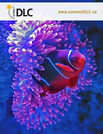
Biology 30 - Evidence of Evolution Part 4
- Subject:
- Biology
- Author:
- Distance Learning Centre
- Date Added:
- 04/11/2018

Biology 30 - Evidence of Evolution Part 4

This 18-minute video lesson looks at the the vocabulary of DNA: chromosomes, chromatids, chromatin, transcription, translation, and replication. [Biology playlist: Lesson 8 of 71].

Your body is made of cells -- but how does a single cell know to become part of your nose, instead of your toes? The answer is in your body's instruction book: DNA. Joe Hanson compares DNA to detailed manual for building a person out of cells -- with 46 chapters (chromosomes) and hundreds of thousands of pages covering every part of you.

In this video collaboration from Khan Academy and 23andMe, you'll find out why women don't have a Y chromosome. Even with no Y, women can still learn about their paternal ancestry with genetic testing from services like 23andMe.

Students randomly select jelly beans (or other candy) that represent genes for several human traits such as tongue-rolling ability and eye color. Then, working in pairs (preferably of mixed gender), students randomly choose new pairs of jelly beans from those corresponding to their own genotypes. The new pairs are placed on toothpicks to represent the chromosomes of the couple's offspring. Finally, students compare genotypes and phenotypes of parents and offspring for all the "couples" in the class. In particular, they look to see if there are cases where parents and offspring share the exact same genotype and/or phenotype, and consider how the results would differ if they repeated the simulation using more than four traits.

In a class discussion format, the teacher presents background information about basic human genetics. The number of chromosomes in both body cells and egg and sperm cells is covered, as well as the concept of dominant and recessive alleles. Students determine whether or not they possess the dominant allele for the tongue-rolling gene as an example.